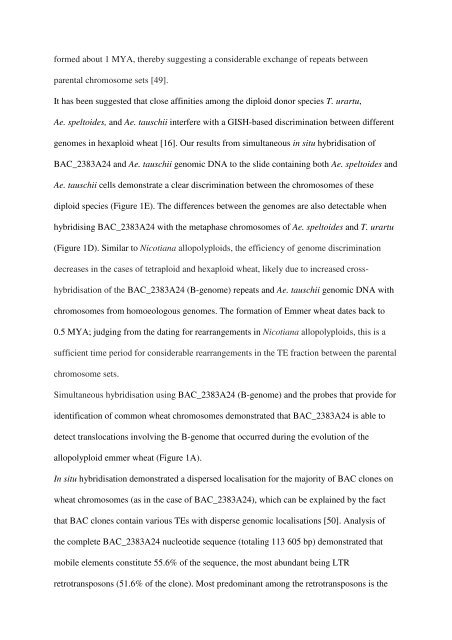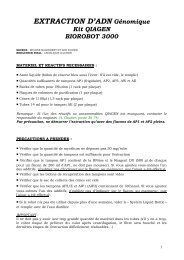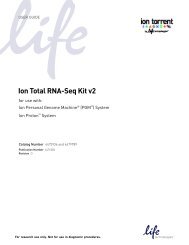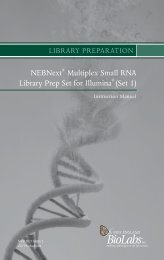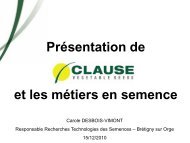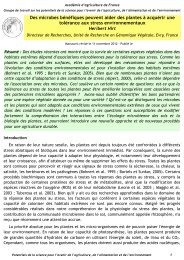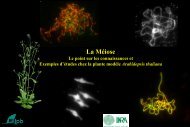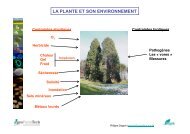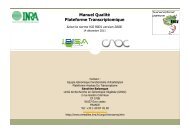The impact of Ty3-gypsy group LTR retrotransposons ... - URGV - Inra
The impact of Ty3-gypsy group LTR retrotransposons ... - URGV - Inra
The impact of Ty3-gypsy group LTR retrotransposons ... - URGV - Inra
You also want an ePaper? Increase the reach of your titles
YUMPU automatically turns print PDFs into web optimized ePapers that Google loves.
formed about 1 MYA, thereby suggesting a considerable exchange <strong>of</strong> repeats between<br />
parental chromosome sets [49].<br />
It has been suggested that close affinities among the diploid donor species T. urartu,<br />
Ae. speltoides, and Ae. tauschii interfere with a GISH-based discrimination between different<br />
genomes in hexaploid wheat [16]. Our results from simultaneous in situ hybridisation <strong>of</strong><br />
BAC_2383A24 and Ae. tauschii genomic DNA to the slide containing both Ae. speltoides and<br />
Ae. tauschii cells demonstrate a clear discrimination between the chromosomes <strong>of</strong> these<br />
diploid species (Figure 1E). <strong>The</strong> differences between the genomes are also detectable when<br />
hybridising BAC_2383A24 with the metaphase chromosomes <strong>of</strong> Ae. speltoides and T. urartu<br />
(Figure 1D). Similar to Nicotiana allopolyploids, the efficiency <strong>of</strong> genome discrimination<br />
decreases in the cases <strong>of</strong> tetraploid and hexaploid wheat, likely due to increased crosshybridisation<br />
<strong>of</strong> the BAC_2383A24 (B-genome) repeats and Ae. tauschii genomic DNA with<br />
chromosomes from homoeologous genomes. <strong>The</strong> formation <strong>of</strong> Emmer wheat dates back to<br />
0.5 MYA; judging from the dating for rearrangements in Nicotiana allopolyploids, this is a<br />
sufficient time period for considerable rearrangements in the TE fraction between the parental<br />
chromosome sets.<br />
Simultaneous hybridisation using BAC_2383A24 (B-genome) and the probes that provide for<br />
identification <strong>of</strong> common wheat chromosomes demonstrated that BAC_2383A24 is able to<br />
detect translocations involving the B-genome that occurred during the evolution <strong>of</strong> the<br />
allopolyploid emmer wheat (Figure 1A).<br />
In situ hybridisation demonstrated a dispersed localisation for the majority <strong>of</strong> BAC clones on<br />
wheat chromosomes (as in the case <strong>of</strong> BAC_2383A24), which can be explained by the fact<br />
that BAC clones contain various TEs with disperse genomic localisations [50]. Analysis <strong>of</strong><br />
the complete BAC_2383A24 nucleotide sequence (totaling 113 605 bp) demonstrated that<br />
mobile elements constitute 55.6% <strong>of</strong> the sequence, the most abundant being <strong>LTR</strong><br />
<strong>retrotransposons</strong> (51.6% <strong>of</strong> the clone). Most predominant among the <strong>retrotransposons</strong> is the


